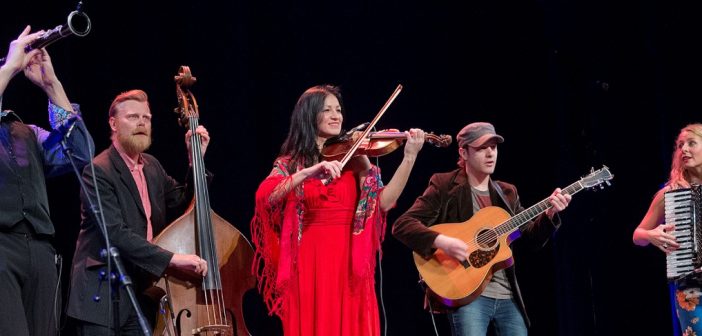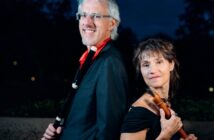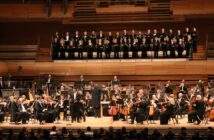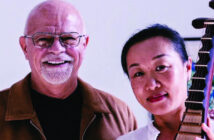
This page is also available in / Cette page est également disponible en:
Français (French)
Kleztory is a stunning example of the power and the universal nature of the language of klezmer music. Strange to say, this internationally renowned quintet does not have any members of Jewish origin.
From Russia, Western Canada and Quebec, the five musicians came together for their shared love of traditional klezmer music – into which, however, they do not hesitate to take the liberty of weaving their diverse personalities. Their return from Trondheim, Norway, where they will participate in a festival of Jewish culture, will mark the beginning of a rich season of travel and gatherings.
Sidewalks to Studios
Clarinettist and composer Airat Ichmouratov and violist and violinist Elvira Misbakhova hail from the Republic of Tatarstan in central Russia. Having studied classical music in their home country, they took a leap of faith and pursued studies in Canada in 1998-99. It was at the Orford music camp that they met clarinettist André Moisan and the late violist and violinist Eleonora Turovsky, who would take them under their wings at the Université de Montréal.
“Upon arrival, we spoke neither French nor English,” Misbakhova explains. “We spent most of our time in the streets and in the metro, playing to pay for our studies and survive.” This was how they discovered klezmer music; it was an audience favourite. Gradually, they enhanced their repertoire, and discovered the music was at once festive and rich with emotion.
In 2000, they joined an existing klezmer music group and Kleztory was born, performing its very first concert at the Upstairs jazz club. Here they met double bassist Mark Peetsman, accordionist Henri Oppenheim and guitarist Alain Legault. “In 2001, we recorded our first album at home, doing our best with what we had,” Ichmouratov recalls. “Within a few hours on St. Catherine Street, we had sold a hundred CDs. People were lining up to buy our album. It was incredible.”
Fuelled by naiveté or by sheer nerve and proud of their first recording, they presented their work to Yuli Turovsky, conductor of I Musici de Montréal. A few days later, Turovsky proposed a recording session with his ensemble. The resulting album, Klezmer, came out in 2004 on the Chandos label and was distributed in 50 countries.
Replacing their streets and metro stations with international venues, their success was rapid. In the space of a few years, they collaborated with the Montreal, Quebec, and Laval Symphony Orchestras as well as the Orchestre Métropolitain and performed around the globe.
At the Intersection of Style and Emotion
Since its founding in 2000, Kleztory has seen a great deal of change. The original guitarist Dany Nicolas and accordionist Mélanie Bergeron succeeded, respectively, Alain Legault and Henri Oppenheim, not to mention the addition of an agent, Marc Labelle.
An unwavering support, Labelle is the “key to Kleztory’s success,” says Airat. The team of six became a team of devoted friends over the years, an energy that is felt by their audiences.
“Every show is like a wedding night,” Bergeron confides. “We surprise each other and discover each other all over again every time. During solos, we listen to what the other is playing, out of an interest in what they are living in that moment.”
A pianist by training, Bergeron wanted to get closer to her audiences, and the accordion proved to be an effective medium in that respect. She began with the group Gadji-Gadjo, where she first discovered klezmer music and its “flavour that grabs you by the heart.”
She now plays in several different world music ensembles. As for Nicolas, he brings a flair straight from the St. Lawrence into his playing and his compositions. Hailing from Tadoussac, he most notably plays with the groups Sagapool, Apadooraï and Badaboom Band.
Kleztory is enhanced by the rich, diverse personalities of its musicians and their wide range of influences, from bluegrass to circus music, from folk to Russian post-romanticism, all while staying close to the klezmer tradition. The group has kept that essence and personalized it with original arrangements and compositions, which we find in equal measure in their latest album, Nigun.
In this fashion, Airat’s piece Kleztory Freylech is a joyful dance halfway between invention and tradition. Jerusalem Ridge by Mark Peetsman is a tribute to its namesake piece by bluegrass artist Bill Monroe. Soulmate is a doina, a traditional Romanian piece, that features the duclar, which is a recent instrument halfway between the duduk of central Europe and the clarinet. To listen to a Kleztory album is to open one’s heart to influences from all over the world, brought together in the emotional intensity and deep passion of Jewish music.
Having received invitations to perform in several European countries and across Canada, the group should have a busy year, all the more for the fact they have a new album in the works, based on the theme of immigration.
“This album will represent all the refugees of the world,” Airat affirms. “In difficult times, we believe that music can make a difference.”
Convinced that beauty, passion and friendship can bring light across political divides, these musicians hold deep in their hearts the inextinguishable spark of hope that is, perhaps, the raison d’être of klezmer music.
This page is also available in / Cette page est également disponible en:
Français (French)














